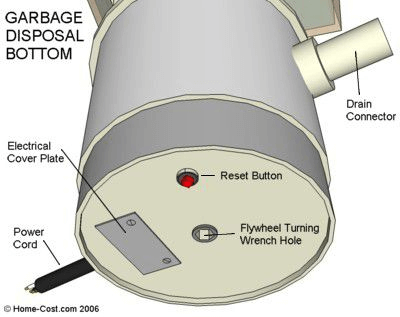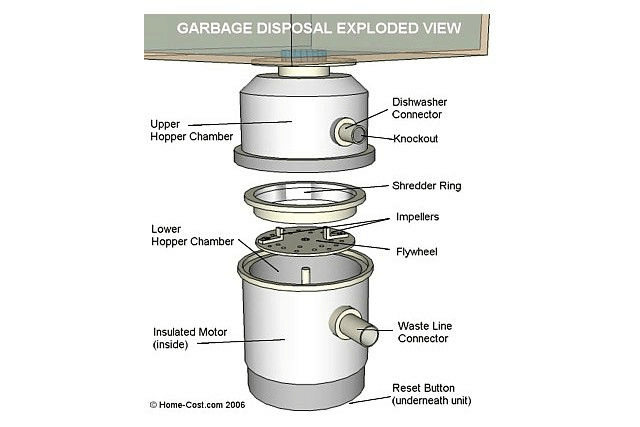Tips if you're having problems with your garbage disposal unit.
If your garbage disposal is not functioning properly
If your garbage disposal is not turning on, remember to never reach into the grinding chamber. Instead, use a wooden spoon or another tool to dislodge any obstructions.
The garbage disposal is designed to shut off automatically if it becomes clogged, overheats, or if there is an issue with the motor. A simple solution you may not be aware of is the small red reset button located at the bottom of the disposal unit.
Before attempting any fixes, ensure the disposal is switched off. Look for the red reset button under the unit - if it is slightly popped out, push it back in and try running the disposal again. Also, check the electrical panel to see if the breaker needs to be reset.
If the reset button continues to pop out or if you have to repeatedly reset the breaker, the disposal may be jammed. Read on to learn how to troubleshoot a jammed garbage disposal.

When the Motor Hums But Won’t Grind
If you hear the motor humming but there's no grinding noise, it indicates that the flywheel is stuck. This can cause the reset button to trip or the fuse/circuit breaker to turn off the disposal. The flywheel gets stuck when something is trapped between it, the impeller(s), and the shredder ring. Learn more about the inner workings of a garbage disposal below:

Troubleshooting a Jammed Garbage Disposal
To dislodge a jam in your garbage disposal, insert the offset wrench or a simple Allen wrench into the flywheel turning hole located at the bottom of the unit. Turn the wrench clockwise to free the stuck impeller or flywheel. You will feel the flywheel turn freely once it dislodges.
After freeing the flywheel, turn the power back on at the electrical panel and press the reset button before attempting to use the disposal. Run water and quickly toggle the switch on and off to spin the flywheel, dislodge any obstruction, and rinse it down the drain. If the disposal still does not run and no obstruction is visible, it may need professional service or replacement.
Avoid putting the following items down your garbage disposal:
- Grease, as it can coat your pipes
- Bones, which can become a persistent spinning hazard
- Celery, as its fibrous strings can tangle around the disposal blades
- Coffee grounds, which can turn into a sticky sludge due to their oil content
- Eggshells, which can break down into sand-like particles that stick to grease
- Corn husks, as their fibers can get caught in the blades
- Artichokes, which are too fibrous for the disposal
- Fruit pits, which are very hard and can jam the disposal blades
- Potato peels, starchy vegetables, and pasta, which can create a sticky mess
- Never put your hand in the disposal for any reason.
If these tips don’t work, call a plumber or notify the Alturas Customer Care team.
Best Practices:
- Always use cool running water (not hot) when operating the disposal, and allow the water to run for 20–30 seconds after turning it off to clear any remaining waste.
- Slowly feed small pieces of food into the disposal to avoid overloading it.
- After grinding up food, let the disposal run for a few extra seconds to ensure everything is cleared out.
- It's a good practice to run the disposal every few days, even if there's no food to grind, to prevent rusting and ensure any food particles are washed away.
- To clean and freshen the disposal, use warm (not hot) water and cut-up lemons.
